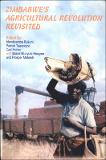| dc.contributor.author | Khombe, Carroll T. | |
| dc.contributor.author | Munyuki-Hungwe, Mabel N. | |
| dc.contributor.author | Tirivanhu, Precious | |
| dc.coverage.spatial | Zimbabwe. | en |
| dc.date.accessioned | 2016-03-15T10:01:39Z | |
| dc.date.available | 2016-03-15T10:01:39Z | |
| dc.date.issued | 2006 | |
| dc.identifier.citation | Khombe, C., Munyuki-Hungwe, M.N. and Tirivanhu, P. (2006) Crafting institutional innovations for smallholder agriculture: lessons from the IDEAA Programme. In: Rukuni, M., Tawonezvi, P. and Eicher, C. (eds.) Zimbabwe's agricultural revolution revisited. Harare: UZ Publications, pp. 671-695. | en |
| dc.identifier.isbn | 0869241419 | |
| dc.identifier.uri | https://opendocs.ids.ac.uk/opendocs/handle/20.500.12413/10041 | |
| dc.description | Research paper on innovative solutions for rural farmers in Zimbabwe. | en |
| dc.description.abstract | About two-thirds of the people in Zimbabwe live in rural areas and most are smallholder farmers whose livelihoods are tied to subsistence agriculture and non-agricultural activities. Until 2000 Zimbabwe had a highly dualistic agricultural sector as a result of pre-independence policies and a white-driven legal framework that sought to buttress the white large-scale commercial farming sector against the black smallholder sector. The contrast between a dynamic, well organized and supported commercial farming sector (located in areas of fertile soils with high rainfall) and smallholder farming areas was evident, yet both production systems existed under the same policy and institutional environment. Without question, many of the past policies were conducive to large- scale agricultural operations with little support to smallholder agriculture (Box 32.1). The agricultural finance policy at independence was meant to encourage the entrance of smallholder farmers into agriculture but instead, due to problems of collateral and punitive high interest rates, fewer farmers accessed these loans (Chimedza, 1994; Mano, 2000). Many of the agricultural policies crafted in the early 1980s were formulated and implemented through a highly centralized process without meaningful input from smallholder farmers who had little information compared to their large-scale counterparts. Delgrado (1998) points out that this poor market information resulted in poor, non functional, unreliable input and output markets and created high transaction costs for farmers. Price controls, such as those on maize, were made in favor of urban consumers but tended to harm the maize producers who were predominately smallholders. | en |
| dc.language.iso | en | en |
| dc.publisher | University of Zimbabwe (UZ) Publications | en |
| dc.rights.uri | http://creativecommons.org/licenses/by-nc-nd/3.0/ | en |
| dc.subject | Agriculture | en |
| dc.subject | Rural Development | en |
| dc.title | Crafting institutional innovations for smallholder agriculture: lessons from the IDEAA programme | en |
| dc.type | Book chapter | en |
| dc.rights.holder | University of Zimbabwe (UZ) | en |


